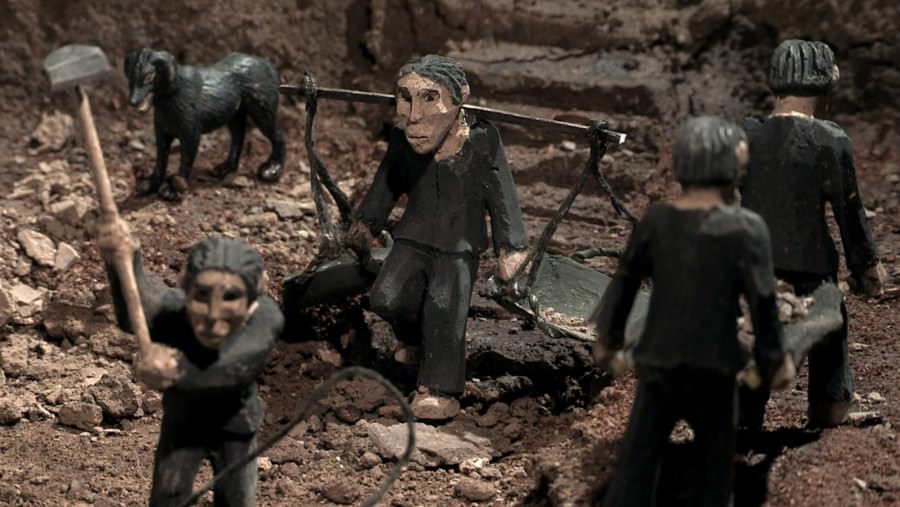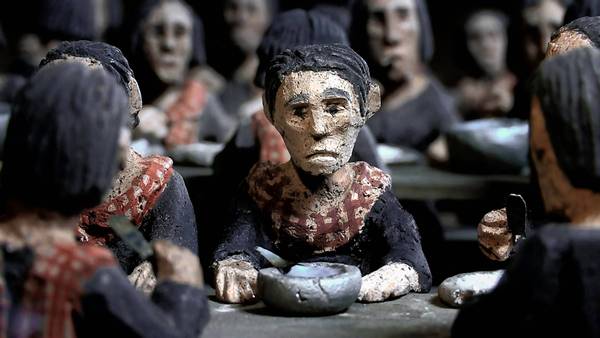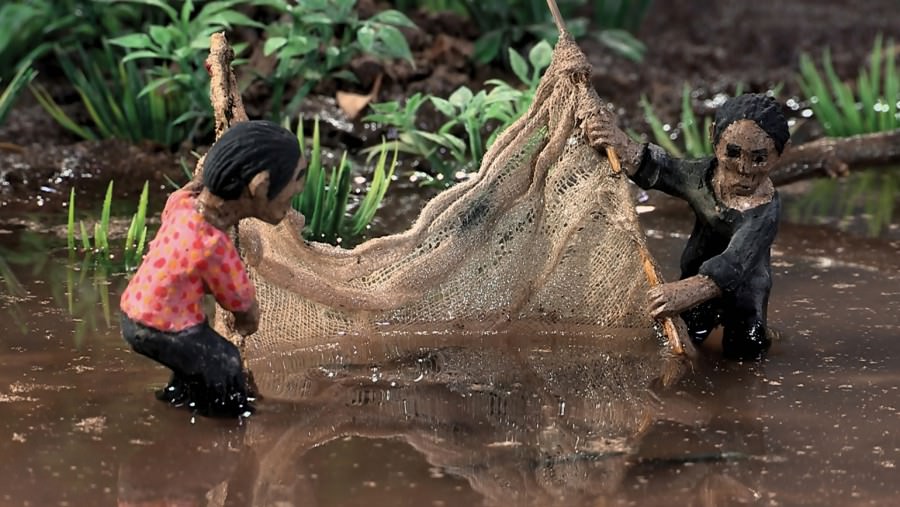Like other secretive and totalitarian regimes of the twentieth century, Cambodia’s Khmer Rouge left behind hardly any visual record of its murderous rule. Of course, the KR leadership, which held total power in Cambodia from 1975 to 1979, had plenty of propaganda made to show the glories of their remaking of Cambodian society. Notoriously, they also left behind black and white head shots of every one of the fourteen thousand people who were admitted to Tuol Sleng Prison in Phnom Penh, officially known as S-21, who were then tortured and executed. But the only two western reporters who were allowed into the country during the KR years were largely unable to record what was happening. Last year one of them, Elizabeth Becker, had an exhibition of her photographs in Phnom Penh, which drew a large and intensely interested audience. Yet while there are portraits of guerrilla soldiers, working peasants, and plenty of the leaders of the Angkar, the Organization, especially Pol Pot himself, there are no images of the starving children, torture, executions, and scenes of grief and misery that were pervasive under a regime that killed one-fifth of the Cambodian population.
The images that do not exist form the “missing picture” of Cambodian filmmaker Rithy Panh’s newest documentary, which won a top prize at the Cannes Film Festival earlier this year and is being screened at the New York Film Festival this fall. (It will be more widely released in the United States in the spring.) The Missing Picture is not a systematic history of the KR era, but it follows the chronology of events, beginning with a brief recollection of Phnom Penh when it was still a languid and abundant Southeast Asian city, perfumed with the scent of jasmine. Then, with the collapse of the American-supported government, young Khmer Rouge soldiers emerged from their jungle redoubts—they had been recruited mostly from Cambodia’s villages—and took over the country’s capital. Panh remembers the silence and stares of these well-indoctrinated boys who were almost children themselves, the first sign of the regime’s mortal hostility to the city and its inhabitants, and then the four years during which the Angkar killed off hundreds of thousands of people—members of the ancien régime of course, but also virtually anybody with an education, anybody who wore glasses, anybody capable of independent thought. After only a short year or so, Cambodia had already become “collectivist, uncorrupt, equal, and prosperous,” as Pol Pot announced, though real life was “straw huts, drought, exhaustion, hunger, speakers blaring slogans,” and, of course, 1.7 million deaths in a population of less than ten million.
Panh was thirteen years old when the Khmer Rouge took power and brought his middle class life in Phnom Penh to an end, literally from one day to the next. He lost his entire family in the ensuing Holocaust but managed, miraculously, to survive himself and, when the Khmer Rouge fell, to move to France. Over the past couple of decades, he has made a series of landmark films on the experience of Cambodians during those years. These include two quietly powerful and unforgettable earlier works on S-21 itself, one of them a long, intimate series of interviews with the man known as Comrade Duch who was the prison’s commandant and supervised the grim work that took place there.
In a way Panh has all along been presenting Cambodia’s missing picture, struggling to remember, reminding his audiences, which, until now, have been mostly in France (his films are made in French), of the savage absurdity of the Khmer Rouge’s radical experiment in utopian social engineering. But The Missing Picture marks a departure from his earlier work. Until now, Panh has allowed the testimony of the witnesses that appear in his film, their memories, their explanations, justifications, excuses, and admissions of criminal conduct, to carry his story. There is no narration, no explanation, no effort to put the rise of the Khmer Rouge into a broader historical setting—the Vietnam War, the American bombing, the sharp contrasts of wealth and poverty that gave the Khmer Rouge much of its early following.
His new documentary is without interviews, without the intrusive camera and magnified close-ups of victims and perpetrators alike that he has used in the past. Unlike his earlier work, this new film provides explanatory narration, written by Panh, that offers both memories of his own experiences under the regime and terse, aphoristic observations on the nature and the meaning of it all.
But how to depict the grisly reality of a period during which the only permitted images were those of a controlled propaganda machine? As in his other work, Panh uses some of the available historical footage to good effect: grainy scenes of the rural work camps full of identically-dressed masses of people dumping panniers of earth over an embankment, images of the leaders of the Angkar smiling and applauding on official visits. These are the pictures of the Khmer rouge that are not missing, Panh says in his narration. They have survived along with some almost comically propagandistic footage of the enemies of the regime (presumably Vietnamese or soldiers of the previous Lon Nol government) being mowed down by KR guerrillas armed only with bows and arrows.
Advertisement
Yet none of this tells us what was really going on. To make up for the pictures we don’t have, Panh uses small clay figurines, hundreds of them, painted, clothed, with individual expressions on their faces, and placed in meticulously detailed dioramas that he seems to have reconstructed from the memories of his youth. Among the first of these is a figure of Panh’s father, an official in the Ministry of Education in a white suit and dark tie who, in what Panh eventually came to see as a heroic act of resistance, starved himself to death rather than allowing himself to be treated as a farm animal by Cambodia’s rulers. There are scenes of Khmer Rouge hospitals where patients lay on beds of wooden planks. And, then there’s the scene in a village, again recreated with clay figurines, in which a nine year-old child who denounces his mother for eating a mango, an act of selfish individualism. Afterwards she is led into the forest and never returns.
These clay statuettes, never before used by Panh in any of his earlier work, cannot, of course, fully depict the horror of the Khmer Rouge story. They are necessarily silent, immobile, and therefore devoid of the intensity of those moments in other Panh films where his camera bores in on the face of a witness and lingers there as he remembers what happened, or what he did. But as Panh’s narration in the new film proceeds, the statuettes take on a reality of their own, a voodoo-like power, their individual features an aid to avoiding what might otherwise be a kind of depersonalizing abstraction.
Certain themes emerge, notably the degree to which the killings were related to ideology, which in Democratic Kampuchea meant, as Panh puts it, that reality had to conform with Pol Pot’s wishes. Since capitalist machines were “corrupt,” peasants would use their bodies as machines, and though it might kill them, their deaths would be pure. But perhaps the greatest immediate value of Panh’s heroic efforts to preserve the memory of the Cambodian Holocaust is the implicit reminder that films like The Missing Picture provide of what is, in effect, a culture of oblivion and impunity in Cambodia today. The crimes were unspeakable, horrific, and well-known, and yet so far only one person, Duch, has been convicted of them—by the Special Cambodian-United Nations Tribunal that has been meeting in Phnom Penh now for almost four years. Many of the top KR leaders, including Pol Pot, are dead; only two other senior leaders remain on trial, and the government of the autocratic Prime Minister Hun Sen, which includes a number of people who were themselves close to the Khmer Rouge, has resisted expanding the trial to include other Khmer Rouge officials who were directly involved in orchestrating the killings.
At one moment in The Missing Picture, a photograph that is not missing appears on the screen. It shows Panh’s nieces and nephews in a happy moment before the KR takeover, not long before they died of starvation as a result of the KR’s savage misrule. Panh’s documentary is an accusation against those who killed them, and who remain unpunished, at large, immune from prosecution.
Rithy Panh’s The Missing Picture (L’image manquante) is being shown at the New York Film Festival on October 8 and will be released in the US in March.




